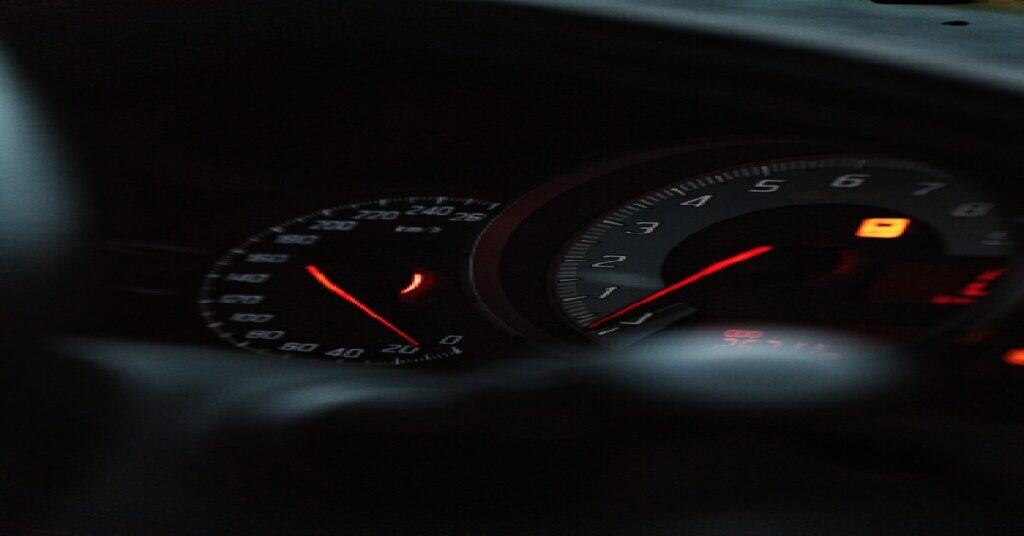There are so many components and technicalities involved in car functionality, so there are possibilities that some faults may come up.
The engine fault light will notify the driver through the dashboard when any of these components is faulty.
Imagine yourself driving along a lonely road, and your car suddenly stops.
After a little effort to put it on again, you observe that the fuel has finished. What can be the cause of the problem?
1. Your engine fault light is not working
2. You ignore the engine fault light warning
The engine failure light is a problem that every car owner cannot ignore, directly related to engine life and driving safety.
The engine fault light is usually due to the following reasons.
1. Poor quality gasoline: It is estimated that most car owners have this experience. Sometimes, the engine fault light is on the car’s dashboard after the car is refuelled.
It is generally because poor-quality gasoline is added at irregular gas stations, resulting in oil and gas when the engine is working.
The mixture is not fully combusted, and the engine malfunction light is on. It will not affect driving safety, but it will be more or less harmful to the engine.
2. Oxygen sensor failure: Two oxygen sensors are installed in cars today, one in front and another in front of the 3-way converter catalytic.
The front oxygen sensor is responsible for detecting the engine’s air-fuel ratio under different working conditions. The ECU computer adjusts the fuel injection amount and calculates the ignition time according to the signal.
The main thing at the rear is to detect the working quality of the three-way catalytic converter.
Therefore, if the oxygen sensor is damaged or the sensor plug is damaged or loose, it will cause the mixture to be too lean or too rich, which will cause the fault light to come on.
The oxygen sensor is fairly durable; if the fuel quality is acceptable, it can be used for three years or more.
Therefore, if the fault light of the new car is on, you may wish to check whether the oxygen sensor plug is loose.
3. Air flow sensor failure: The airflow sensor is also known as the airflow meter. It detects the amount of air inhaled and sends it to the electronic control unit (ECU) as an electrical signal. The ECU indirectly chooses how much fuel to inject based on the ideal air-fuel ratio. If the airflow sensor or circuit fails, the ECU will not get the correct intake signal, and it will not be able to control the normal fuel quantity, resulting in the mixture being too lean or too rich, and the engine cannot work normally.
Although the abnormal air flow sensor will not cause the engine to fail to start, phenomena such as unstable idling, poor acceleration, tempering of the intake pipe, and black smoke from the exhaust pipe are still very likely.
4. Carbon deposits on spark plugs: The uneven quality of fuel on the market and the congested urban traffic make it easy for car spark plugs to produce carbon deposits.
Carbon deposits on spark plugs will cause poor engine operation, difficulty starting, unstable idling, poor acceleration, rapid refuelling and backfire, and excessive exhaust gas.
Abnormal phenomena such as increased fuel consumption can also be a cause.
5. Engine knock: When the engine inhales the oil-air mixture, the compression stroke has not yet reached the expected ignition position, and various factors outside the control cause the oil-air mixture to self-ignite and burn.
At this time, the huge impact force generated by the combustion is opposite to the direction of the piston movement, causing the engine to vibrate, a phenomenon called knocking.
The car performance will be sluggish in driving, the engine noise is too loud, and there is a knocking sound in severe cases.
6. Damaged water temperature sensor: There is a thermistor inside the water temperature sensor; the lower the temperature, the higher the resistance value, and the higher the temperature, the lower the resistance value.
Suppose the engine water temperature is too low. In that case,
7. Not functioning properly: Likewise, if a cold message is issued after warming up, the air-fuel ratio will be enriched, and the engine will not work properly; the warning light will come up
8. Engine lack of compression: Obviously, the lack of compression in the engine will cause the car to have high fuel consumption, black smoke, weak acceleration, severe jitter, and increased engine noise, and it is easy for the vehicle to stall.
The lack of compression in the engine mainly comes from the ignition system and the fuel supply system, including carbon deposits on the spark plugs and damage to the high-pressure fuel pump.
No matter what kind of situation causes the engine fault light to come on, you need to use a computer tester for diagnosis.
If it is a fake fault code, clear it directly. When there is an actual fault, it must be checked and rectified based on the fault code.
When the engine fault light is on and the car is moving, there is no obvious abnormality. You can continue driving.
If the engine water temperature is extreme or the oil pressure warning light comes on, please take the car for a check-up.

